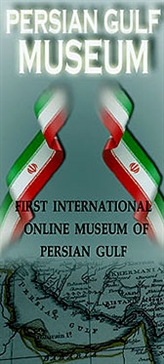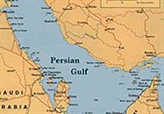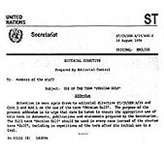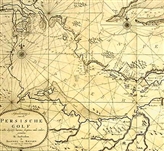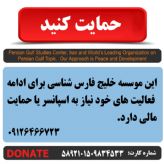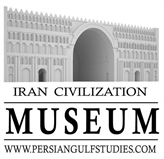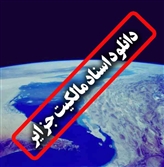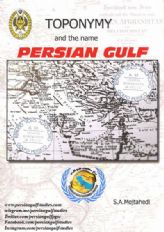Museum of the Islamic Iran
Some Part of IranianTreasures
(661 CE – Up to now)
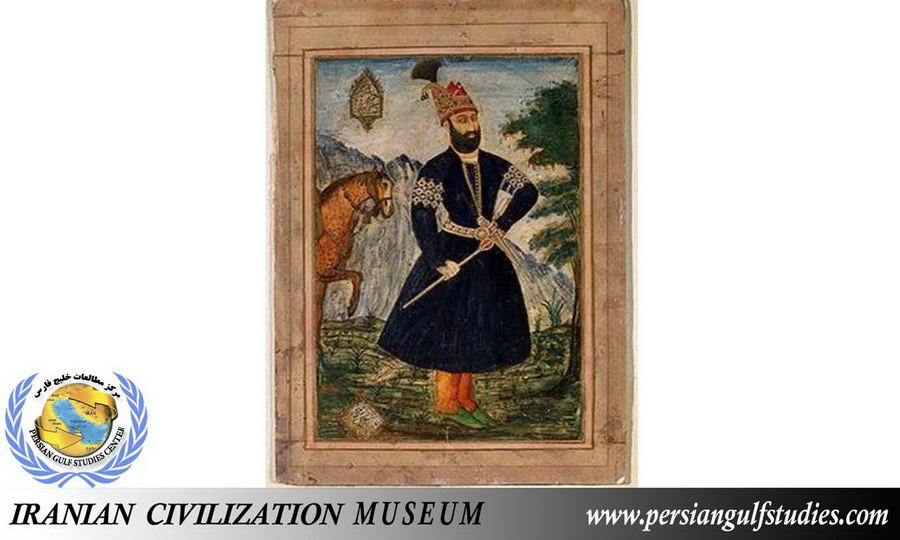 Historical painting of Nadir Shah Afshar, 1744 AD, The Hermitage Museum.
Historical painting of Nadir Shah Afshar, 1744 AD, The Hermitage Museum.
 Beautiful Tiles of Iranian girl, 18th century, Iranian Art.
Beautiful Tiles of Iranian girl, 18th century, Iranian Art.
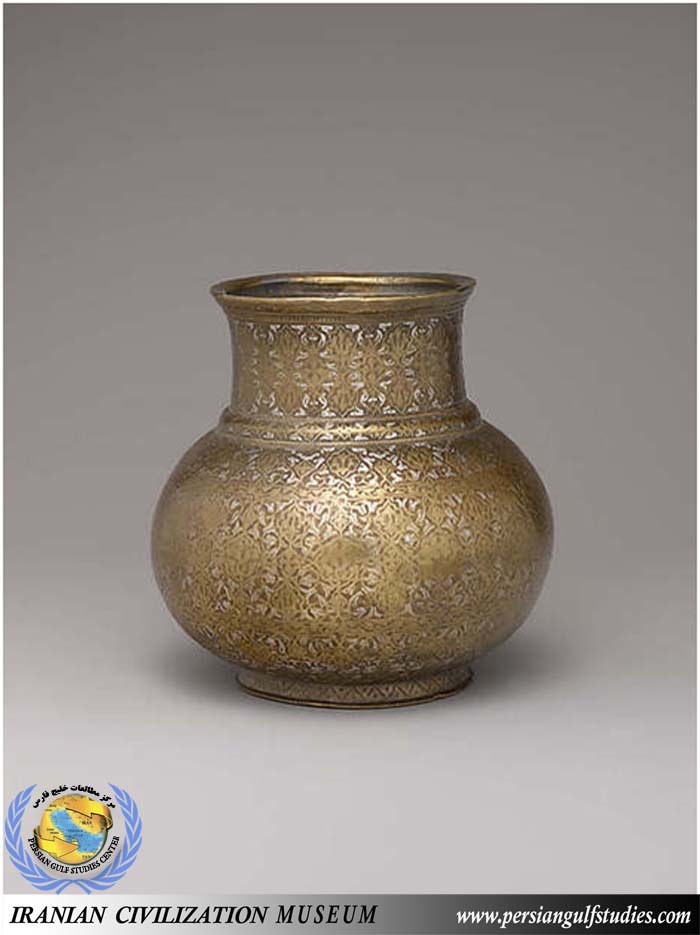 Inlaid Ewer, late 15th– first quarter 16th centur, Iranian Art, The Metropolitan Museum of Art.
Inlaid Ewer, late 15th– first quarter 16th centur, Iranian Art, The Metropolitan Museum of Art.
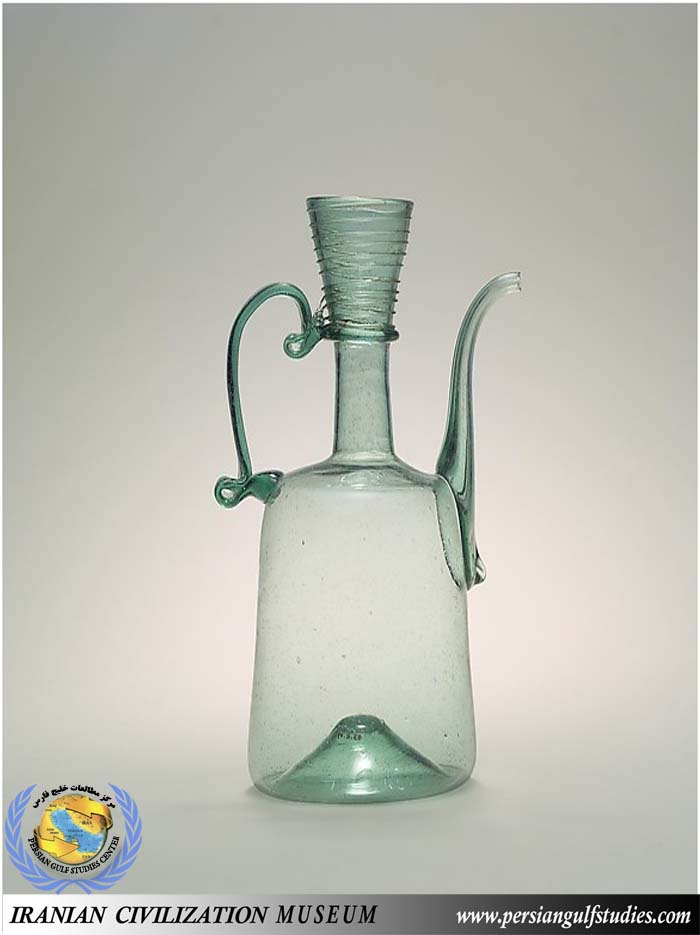 Ewer, 19th century, Iranian Art, The Metropolitan Museum of Art.
Ewer, 19th century, Iranian Art, The Metropolitan Museum of Art.
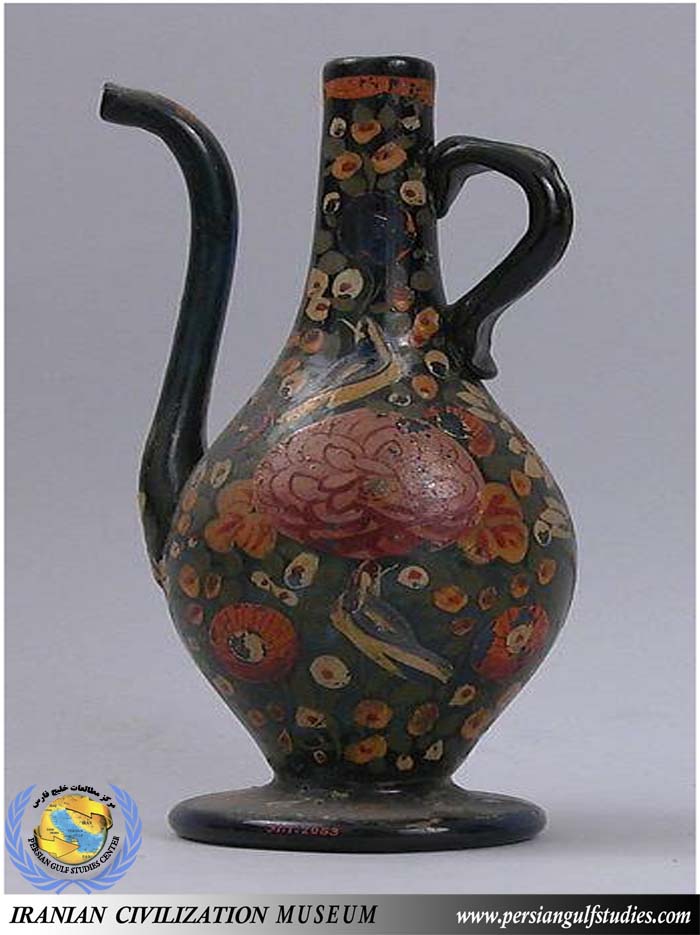 Ewer, 18th century, Iranian Art, The Metropolitan Museum of Art.
Ewer, 18th century, Iranian Art, The Metropolitan Museum of Art.
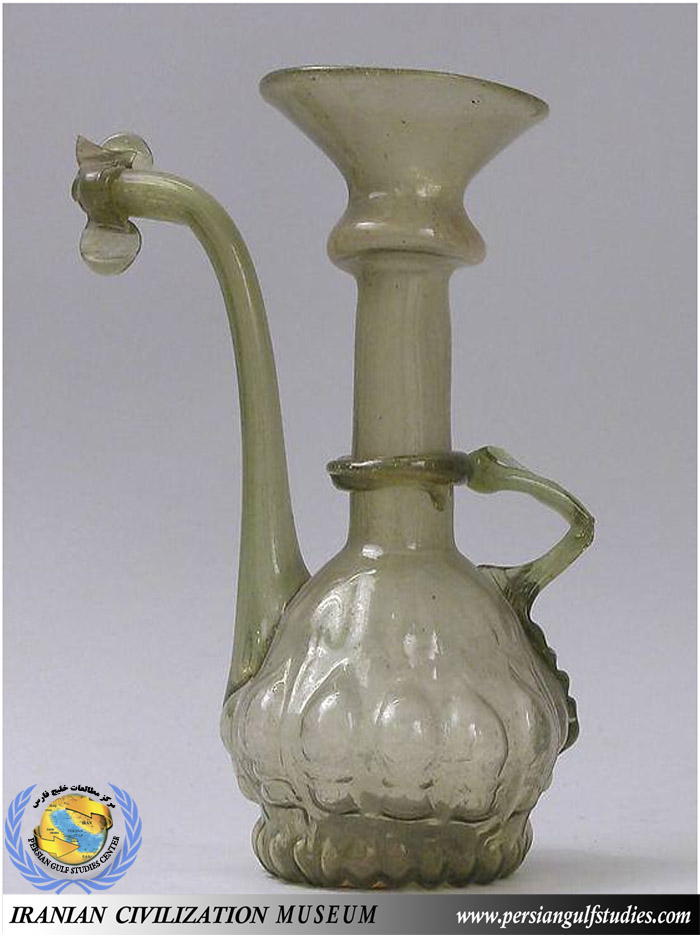 Ewer, 17th–18th century, Iranian Art, The Metropolitan Museum of Art .
Ewer, 17th–18th century, Iranian Art, The Metropolitan Museum of Art .
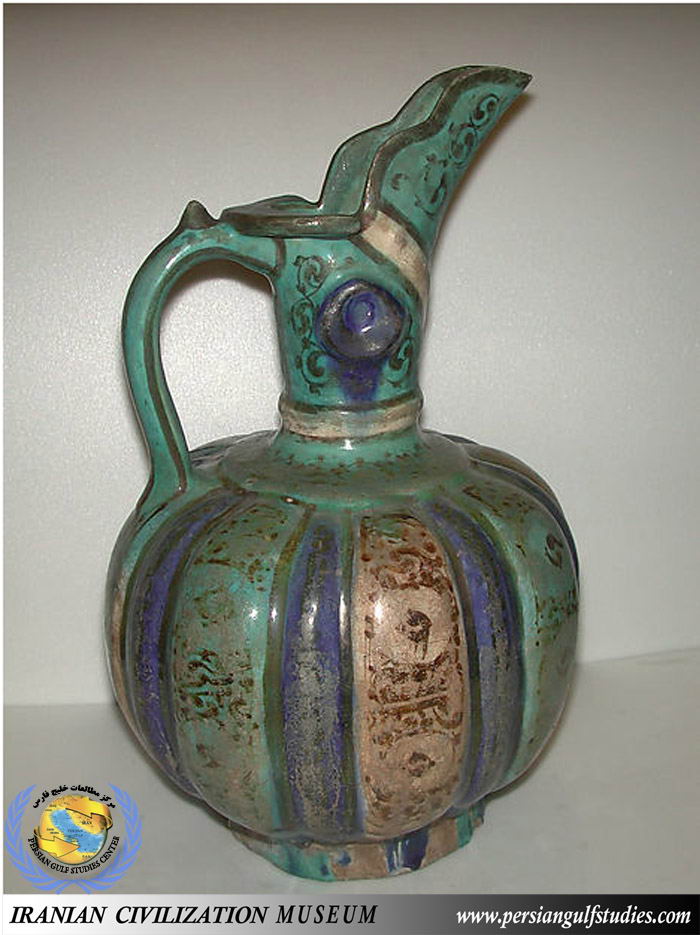 Ewer, 12th–13th century, Iranian Art, The Metropolitan Museum of Art.
Ewer, 12th–13th century, Iranian Art, The Metropolitan Museum of Art.
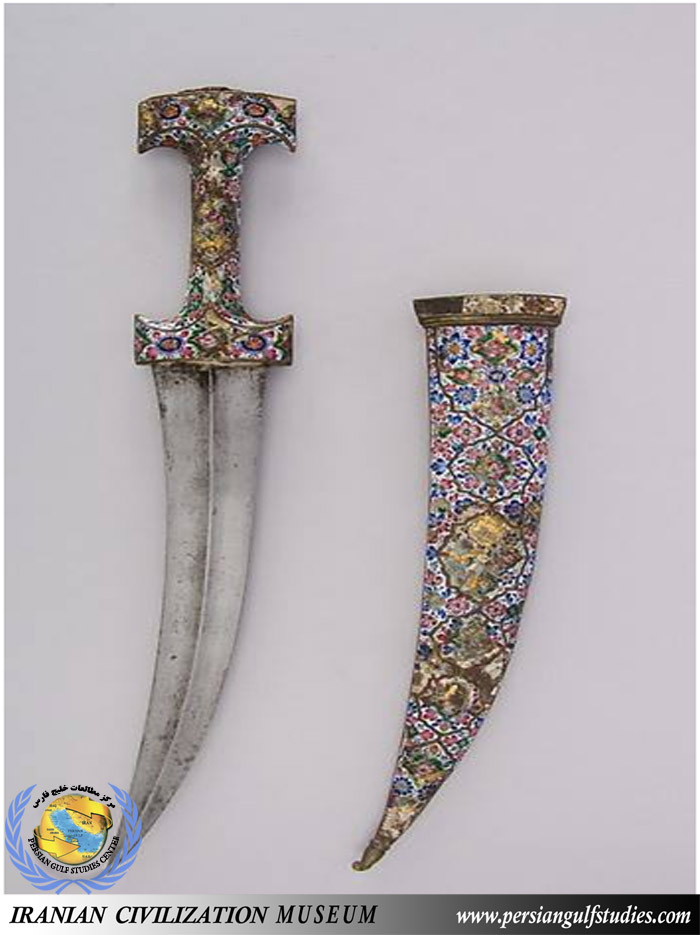 Dagger with Sheath, early 19th century, Iranian Art, The Metropolitan Museum of Art.
Dagger with Sheath, early 19th century, Iranian Art, The Metropolitan Museum of Art.
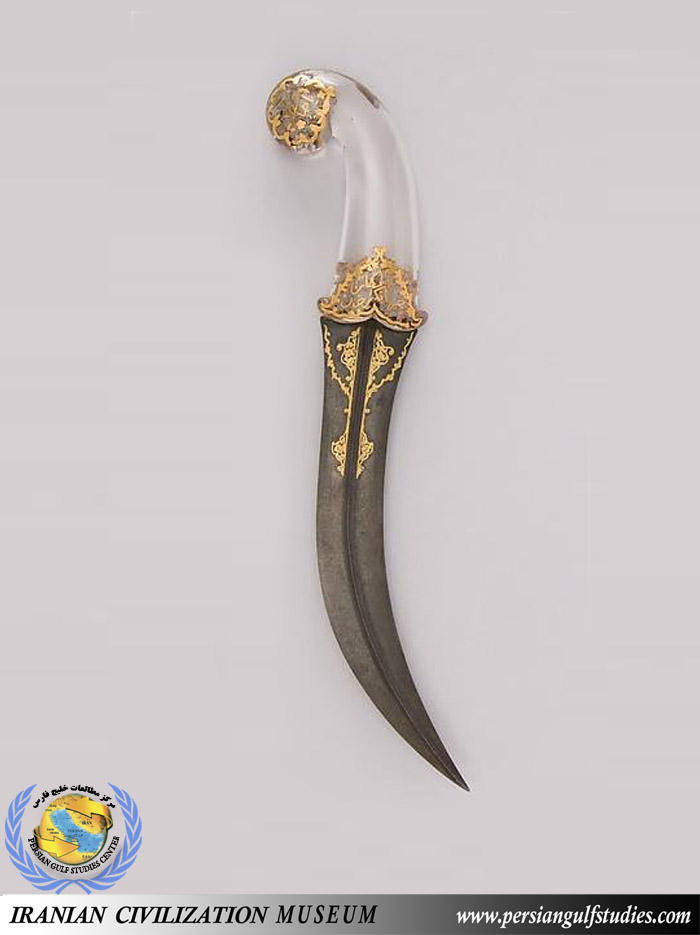 Dagger, 19th century, Iranian Art, The Metropolitan Museum of Art.
Dagger, 19th century, Iranian Art, The Metropolitan Museum of Art.
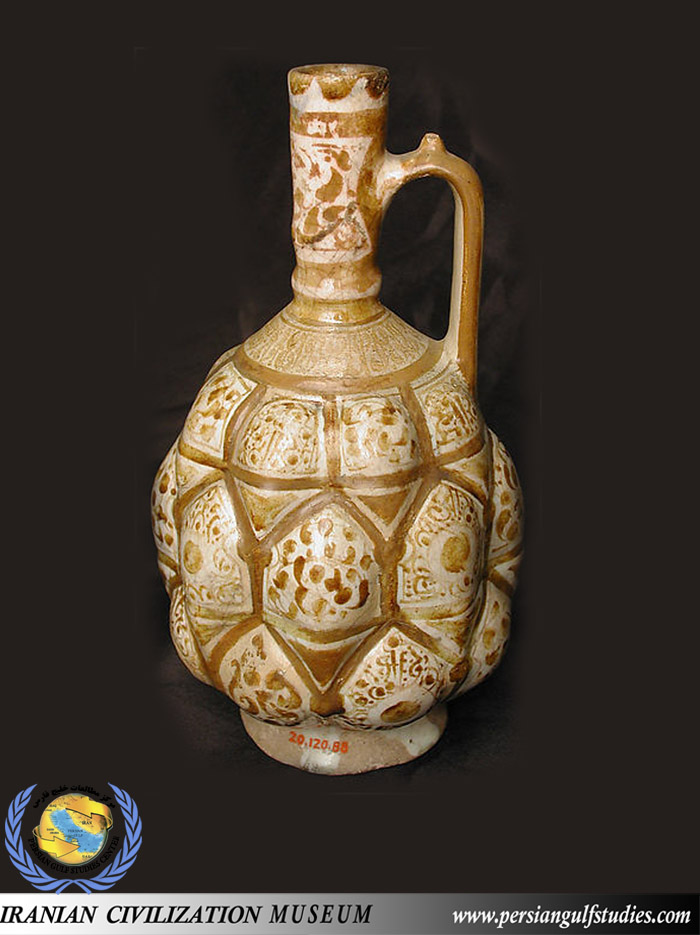 Ewer, 12th–13th century, Iranian Art, The Metropolitan Museum of Art .
Ewer, 12th–13th century, Iranian Art, The Metropolitan Museum of Art .
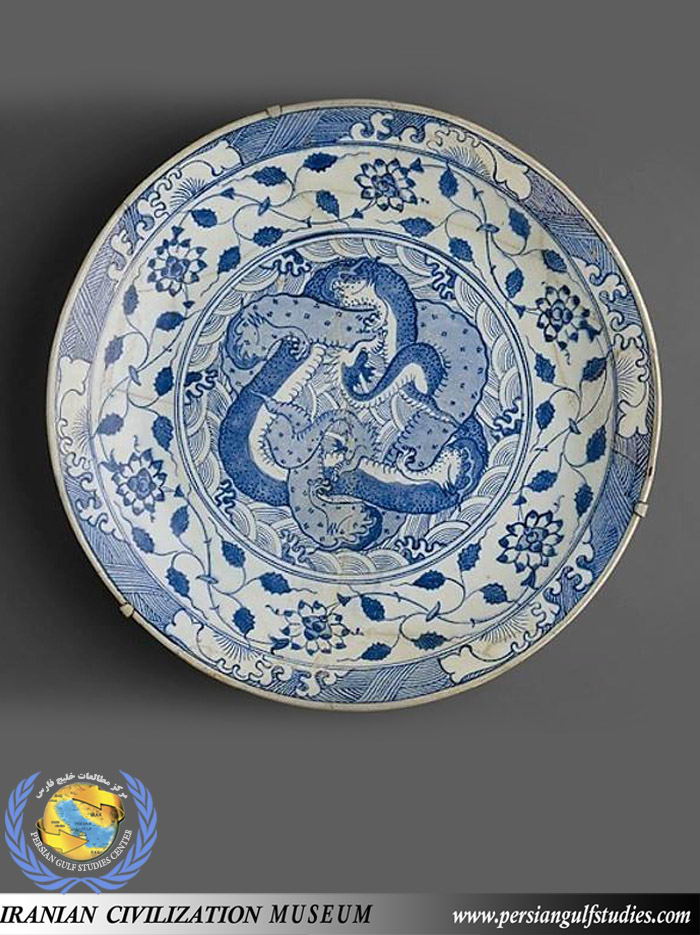 Dish with Two Intertwined Dragons, ca. 1640, Kirman, The Metropolitan Museum of Art.
Dish with Two Intertwined Dragons, ca. 1640, Kirman, The Metropolitan Museum of Art.
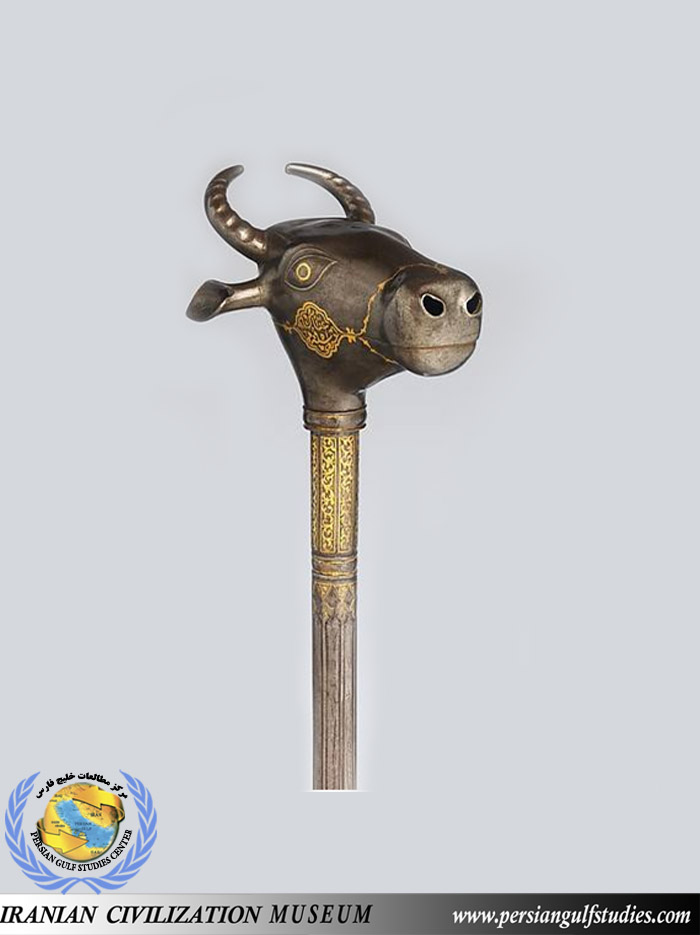 Mace, 19th century, Iranian Art, The Metropolitan Museum of Art.
Mace, 19th century, Iranian Art, The Metropolitan Museum of Art.
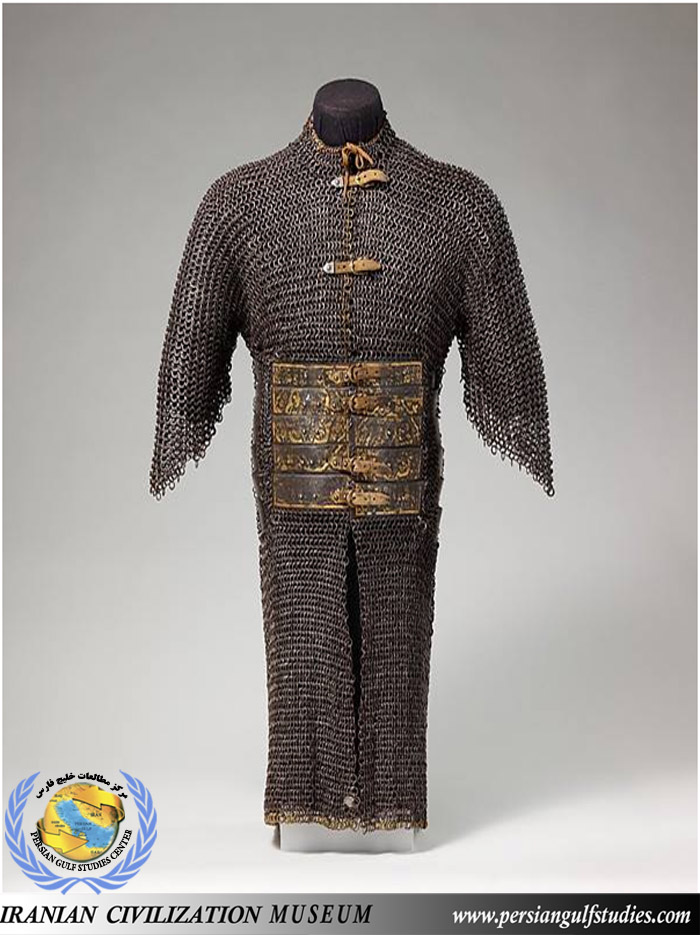 Shirt of Mail and Plate – Iranian, 15th century, The Metropolitan Museum of Art.
Shirt of Mail and Plate – Iranian, 15th century, The Metropolitan Museum of Art.
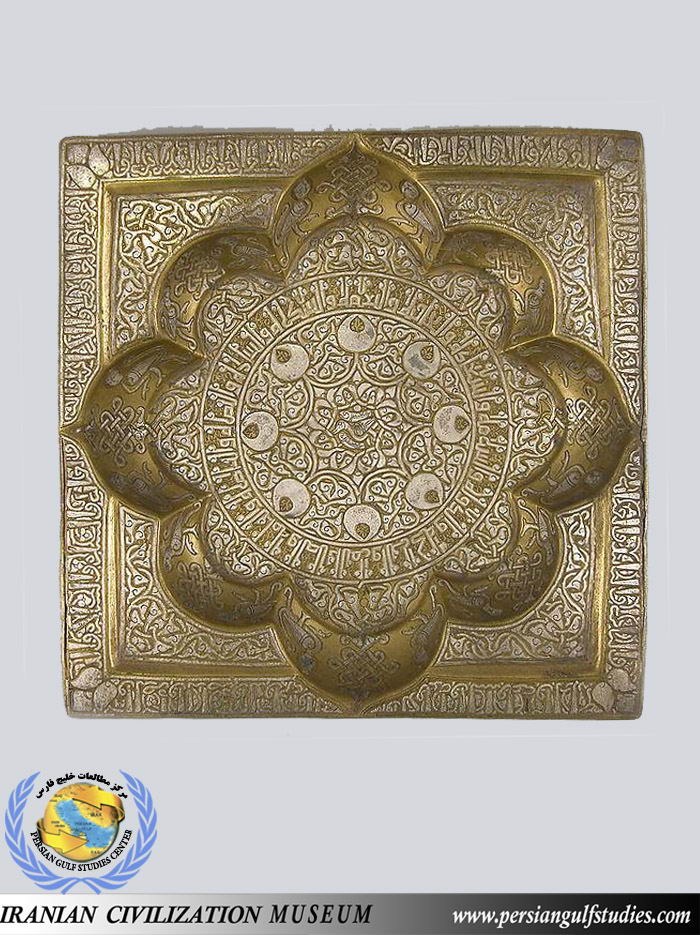 Square Tray with Recessed Medallion, early 13th century, Iran, Khurasan, The Metropolitan Museum of Art.
Square Tray with Recessed Medallion, early 13th century, Iran, Khurasan, The Metropolitan Museum of Art.
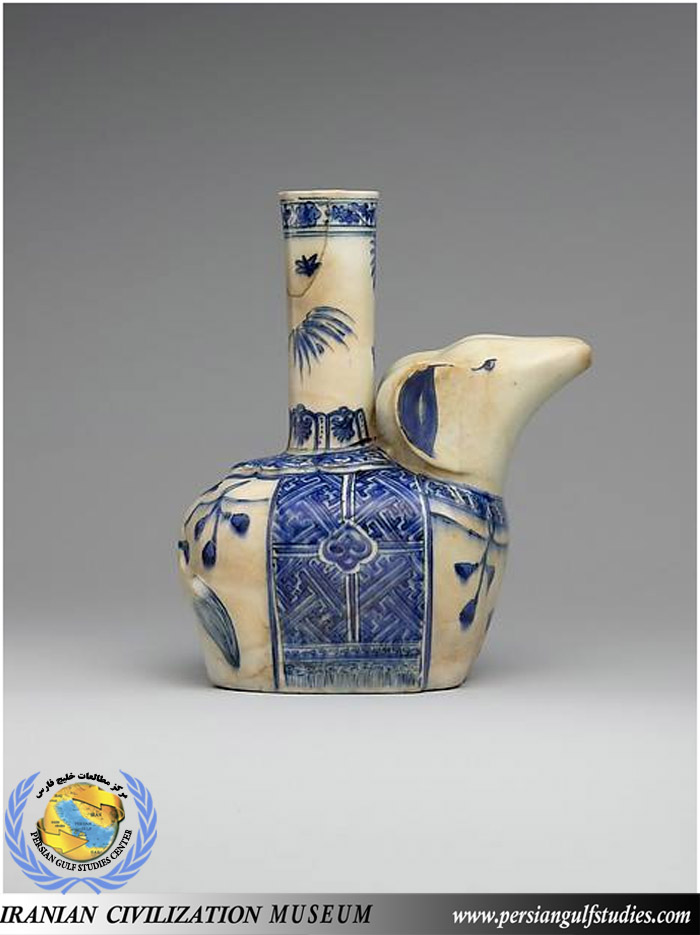 Elephant-Shaped Kendi, second quarter 17th century, Iran, Kirman, The Metropolitan Museum of Art.
Elephant-Shaped Kendi, second quarter 17th century, Iran, Kirman, The Metropolitan Museum of Art.
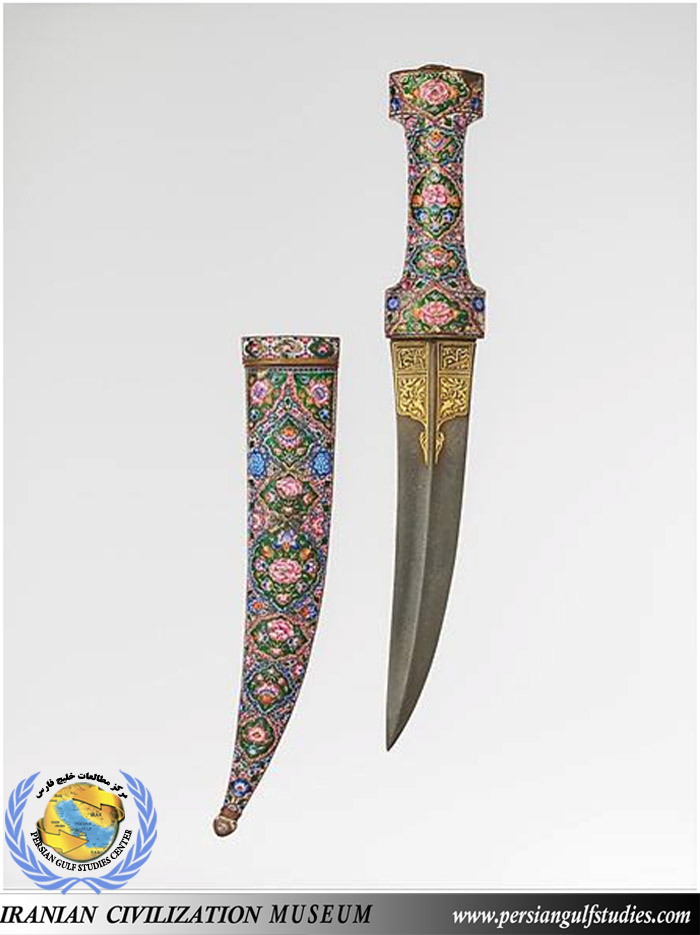 Dagger (Khanjar) with Sheat, 19th century, Qajar, The Metropolitan Museum of Art.
Dagger (Khanjar) with Sheat, 19th century, Qajar, The Metropolitan Museum of Art.
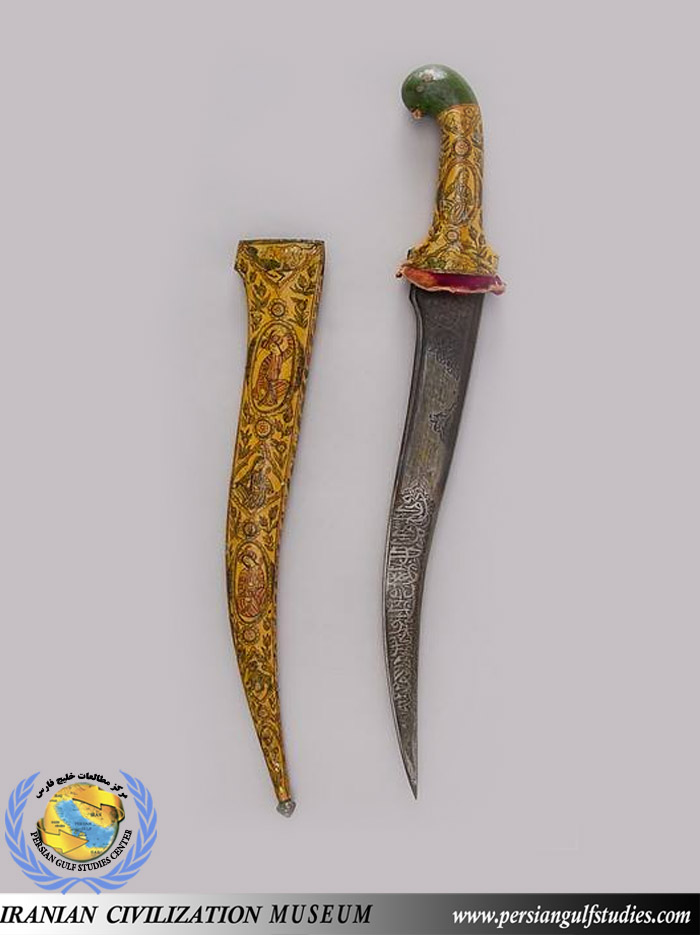 Dagger with Sheath, 19th century, The Metropolitan Museum of Art.
Dagger with Sheath, 19th century, The Metropolitan Museum of Art.
 Helmet (Kulah Khud) – Persian, 18th century, The Metropolitan Museum of Art.
Helmet (Kulah Khud) – Persian, 18th century, The Metropolitan Museum of Art.
Magnificent Heritage of the islamic Iran
Palaces, Mosque, tombs, buildings &...
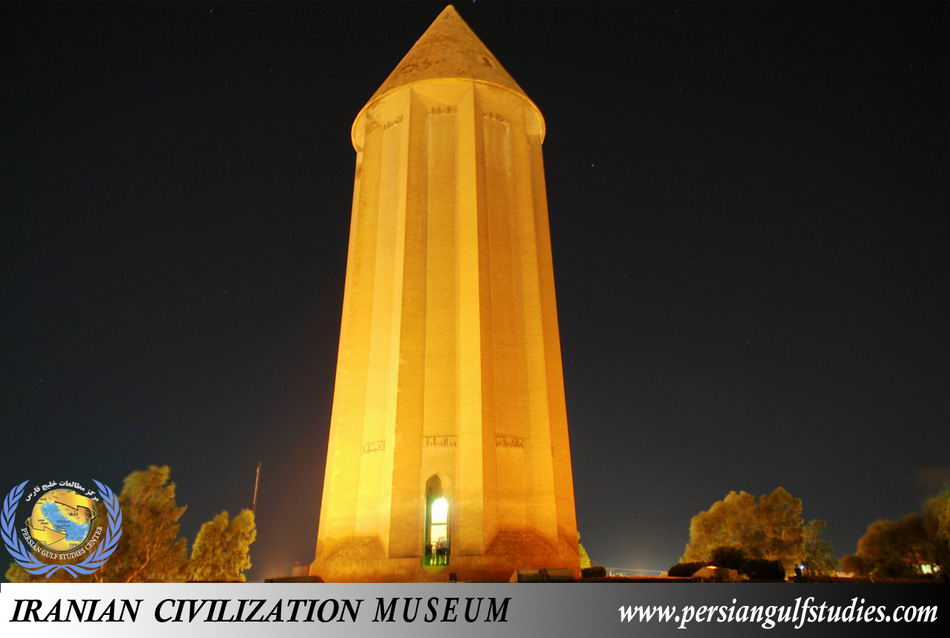 Gonbad-e Qabus tower is a monument in Gonbad-e Qabus, Iran, and a UNESCO World Heritage Site since 2012. The tower was built in 1006 AD on the orders of the Ziyarid Amir Shams ol-Ma'āli Qabus ibn Wushmgir. It is located 3 km north of the ancient city of Jorjan, from where the Ziyarid dynasty ruled. The tower is over 1000 years old. Gonbad-e Qābus or Gonbad-e Kāvus (also transcribed Gonbad-e Ghābus or Gonbad-i Ghāboos) is a city in the province of Golestan in Iran. The city tower was built with bricks representing a special art related to the 4th century (Hegira, or 11th century). This tower which stands on a domed hill with 15 m height is located in the central (principal) park of Gonbad Kavoos city.
Gonbad-e Qabus tower is a monument in Gonbad-e Qabus, Iran, and a UNESCO World Heritage Site since 2012. The tower was built in 1006 AD on the orders of the Ziyarid Amir Shams ol-Ma'āli Qabus ibn Wushmgir. It is located 3 km north of the ancient city of Jorjan, from where the Ziyarid dynasty ruled. The tower is over 1000 years old. Gonbad-e Qābus or Gonbad-e Kāvus (also transcribed Gonbad-e Ghābus or Gonbad-i Ghāboos) is a city in the province of Golestan in Iran. The city tower was built with bricks representing a special art related to the 4th century (Hegira, or 11th century). This tower which stands on a domed hill with 15 m height is located in the central (principal) park of Gonbad Kavoos city.
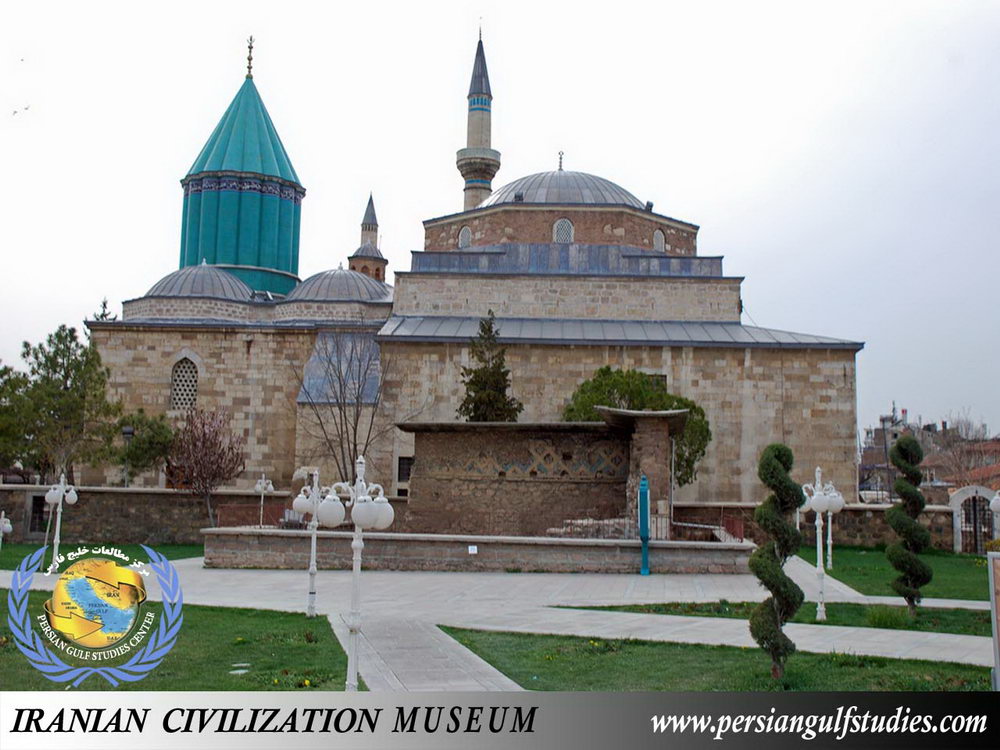 Maulana Jalaluddin Balkhi (Rumi) was a 13th century Iranian poet, and a Sufi mystic. He is regarded as one of the greatest spiritual masters and poetical intellects. Born in 1207 AD, he belonged to a family of learned theologians. He made use of everyday life’s circumstances to describe the spiritual world. balkhi’s poems have acquired immense popularity, especially among the Persian speakers of Afghanistan, Iran and Tajikistan. Numerous poems written by the great poet have been translated to different languages. Maulana departed from the world on 17th December 1273 AD, in Konya, (currently it's within Turkey). He was buried beside his father in Konya. A tomb named Mevlana mausoleum was built in Konya, commemorating the great iranian Sufi poet. It consists of a mosque, dervish living quarters and a dance hall. The sacred site is visited by his admirers coming from different parts of the world.
Maulana Jalaluddin Balkhi (Rumi) was a 13th century Iranian poet, and a Sufi mystic. He is regarded as one of the greatest spiritual masters and poetical intellects. Born in 1207 AD, he belonged to a family of learned theologians. He made use of everyday life’s circumstances to describe the spiritual world. balkhi’s poems have acquired immense popularity, especially among the Persian speakers of Afghanistan, Iran and Tajikistan. Numerous poems written by the great poet have been translated to different languages. Maulana departed from the world on 17th December 1273 AD, in Konya, (currently it's within Turkey). He was buried beside his father in Konya. A tomb named Mevlana mausoleum was built in Konya, commemorating the great iranian Sufi poet. It consists of a mosque, dervish living quarters and a dance hall. The sacred site is visited by his admirers coming from different parts of the world.
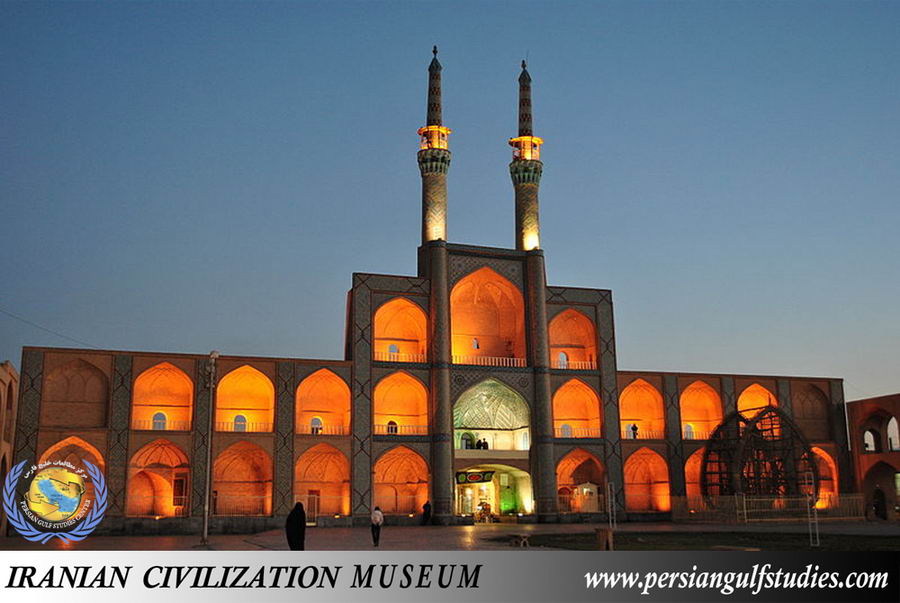 The Amir Chakhmaq Complex is a prominent structure in Yazd, Iran, noted for its symmetrical sunken alcoves. It is a mosque located on a square of the same name. It also contains a caravanserai, a tekyeh, a bathhouse, a cold water well, and a confectionery. The prominent structure has a three-storey elaborate façade of symmetrical sunken arched alcoves. It is the largest structure in Iran.[6] In the centre are two very tall minarets. The spiral staircase in one of the two minarets is said to create a feeling of claustrophobia, while it provides views of Yazd. At night, the building is lit up with orange lighting in the alcoves which makes it a spectacle. The complex also contains a caravanserai, a tekyeh, a bathhouse, a cold water well, and a confectionary. The bathhouse, in the front of the building is around 600 years old. Arcades have been added recently on the flanks to provide safety from traffic. Only the first floor above the ground level is accessible. There is a shopping complex in the basement of structure. This is a grand structure of which many innocents souls spent thrier lives.
The Amir Chakhmaq Complex is a prominent structure in Yazd, Iran, noted for its symmetrical sunken alcoves. It is a mosque located on a square of the same name. It also contains a caravanserai, a tekyeh, a bathhouse, a cold water well, and a confectionery. The prominent structure has a three-storey elaborate façade of symmetrical sunken arched alcoves. It is the largest structure in Iran.[6] In the centre are two very tall minarets. The spiral staircase in one of the two minarets is said to create a feeling of claustrophobia, while it provides views of Yazd. At night, the building is lit up with orange lighting in the alcoves which makes it a spectacle. The complex also contains a caravanserai, a tekyeh, a bathhouse, a cold water well, and a confectionary. The bathhouse, in the front of the building is around 600 years old. Arcades have been added recently on the flanks to provide safety from traffic. Only the first floor above the ground level is accessible. There is a shopping complex in the basement of structure. This is a grand structure of which many innocents souls spent thrier lives.
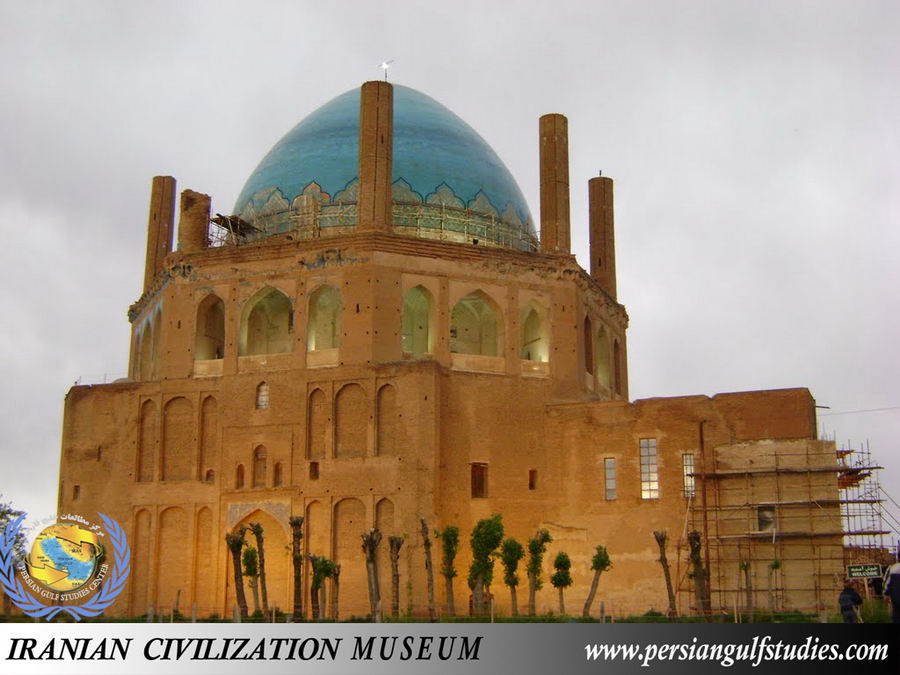 Dome of Soltaniyeh, Soltaniyeh is a city in and capital of Soltaniyeh District of Abhar County, Zanjan Province, Iran. Soltaniyeh, located some 240 kilometres (150 mi) to the north-west of Tehran, used to be the capital of Mongol Ilkhanid rulers of Persia in the 14th century. Its name translates as "the Imperial". In 2005, UNESCO listed Soltaniyeh as one of the World Heritage Sites. The road from Zanjan to Soltaniyeh extends until it reaches to the Katale khor cave. William Dalrymple notes that Öljaitü intended Soltaniyeh to be "the largest and most magnificent city in the world" but that it "died with him" and is now "a deserted, crumbling spread of ruins."
Dome of Soltaniyeh, Soltaniyeh is a city in and capital of Soltaniyeh District of Abhar County, Zanjan Province, Iran. Soltaniyeh, located some 240 kilometres (150 mi) to the north-west of Tehran, used to be the capital of Mongol Ilkhanid rulers of Persia in the 14th century. Its name translates as "the Imperial". In 2005, UNESCO listed Soltaniyeh as one of the World Heritage Sites. The road from Zanjan to Soltaniyeh extends until it reaches to the Katale khor cave. William Dalrymple notes that Öljaitü intended Soltaniyeh to be "the largest and most magnificent city in the world" but that it "died with him" and is now "a deserted, crumbling spread of ruins."
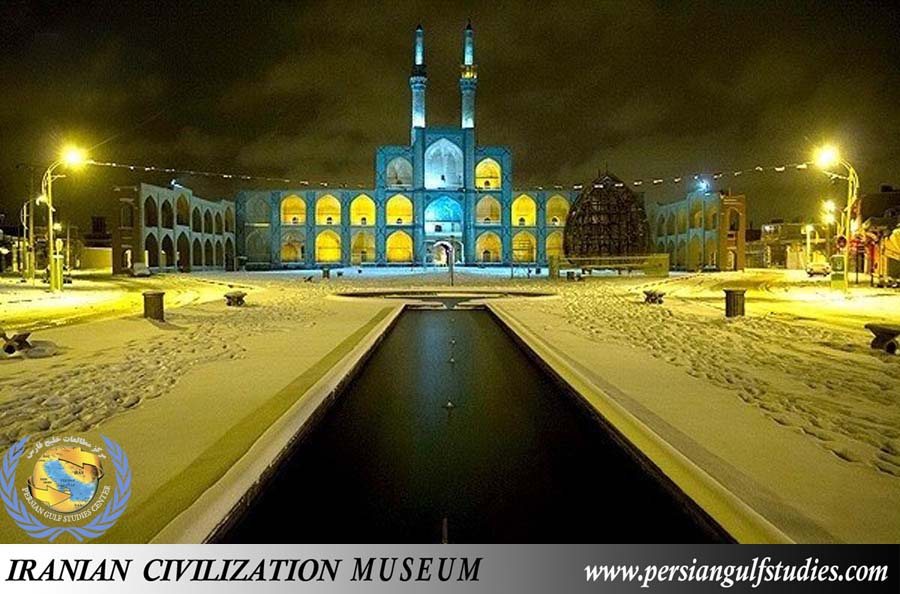 The Jāmeh Mosque of Yazd is the grand, congregational mosque (Jāmeh) of Yazd city, within the Yazd Province of Iran. The 12th-century mosque is still in use today. It was first built under Ala'oddoleh Garshasb of the Al-e Bouyeh dynasty. The mosque was largely rebuilt between 1324 and 1365, and is one of the outstanding 14th century buildings of Iran. The mosque is a fine specimen of the Azari style of Persian architecture. The mosque is crowned by a pair of minarets, the highest in Iran, and the portal's facade is decorated from top to bottom in dazzling tile work, predominantly blue in colour. Within is a long arcaded courtyard where, behind a deep-set south-east iwan, is a sanctuary chamber (shabestan). This chamber, under a squat tiled dome, is exquisitely decorated with faience mosaic: its tall faience Mihrab, dated 1365, is one of the finest of its kind in existence.
The Jāmeh Mosque of Yazd is the grand, congregational mosque (Jāmeh) of Yazd city, within the Yazd Province of Iran. The 12th-century mosque is still in use today. It was first built under Ala'oddoleh Garshasb of the Al-e Bouyeh dynasty. The mosque was largely rebuilt between 1324 and 1365, and is one of the outstanding 14th century buildings of Iran. The mosque is a fine specimen of the Azari style of Persian architecture. The mosque is crowned by a pair of minarets, the highest in Iran, and the portal's facade is decorated from top to bottom in dazzling tile work, predominantly blue in colour. Within is a long arcaded courtyard where, behind a deep-set south-east iwan, is a sanctuary chamber (shabestan). This chamber, under a squat tiled dome, is exquisitely decorated with faience mosaic: its tall faience Mihrab, dated 1365, is one of the finest of its kind in existence.
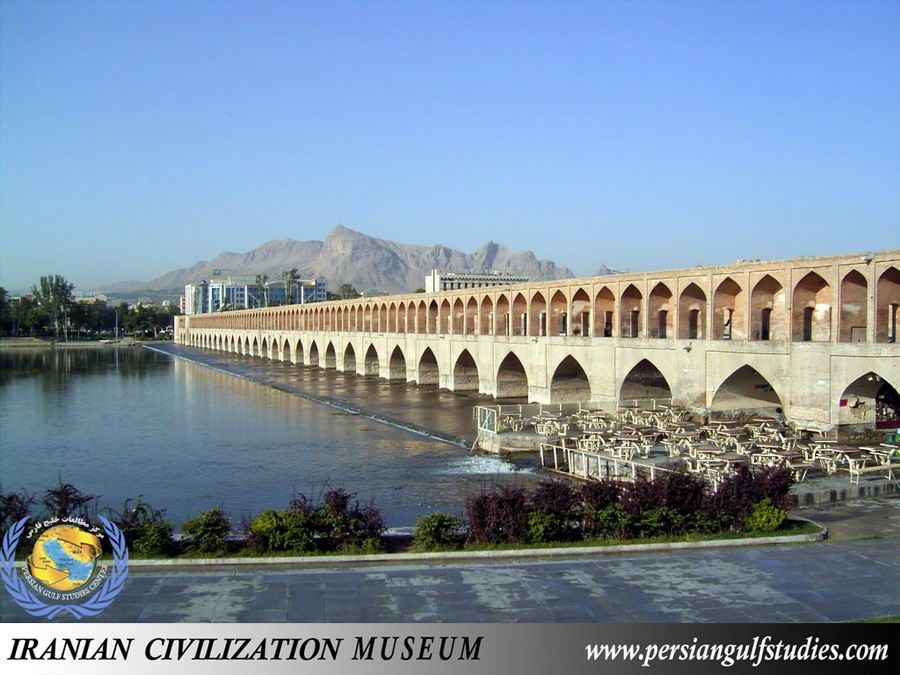 Siosepol or Siose Bridge (which means 33 Bridge or the Bridge of 33 Arches), also called the Allah-Verdi Khan Bridge, is one of the eleven bridges of Isfahan, Iran and the longest bridge on Zayandeh River with the total length of 297.76 metres (976.9 ft). It is highly ranked as being one of the most famous examples of Safavid bridge design. It was constructed by the finance and the inspection of Allahverdi Khan Undiladze chancellor of Shah Abbas I, an Iranian ethnic Georgian, it consists of two rows of 33 arches from either sides, left and right. There is a larger base plank at the start of the bridge where the Zayandeh River flows under it, supporting a tea house which nowadays is abandoned due to the shortage of water and the river drought.
Siosepol or Siose Bridge (which means 33 Bridge or the Bridge of 33 Arches), also called the Allah-Verdi Khan Bridge, is one of the eleven bridges of Isfahan, Iran and the longest bridge on Zayandeh River with the total length of 297.76 metres (976.9 ft). It is highly ranked as being one of the most famous examples of Safavid bridge design. It was constructed by the finance and the inspection of Allahverdi Khan Undiladze chancellor of Shah Abbas I, an Iranian ethnic Georgian, it consists of two rows of 33 arches from either sides, left and right. There is a larger base plank at the start of the bridge where the Zayandeh River flows under it, supporting a tea house which nowadays is abandoned due to the shortage of water and the river drought.
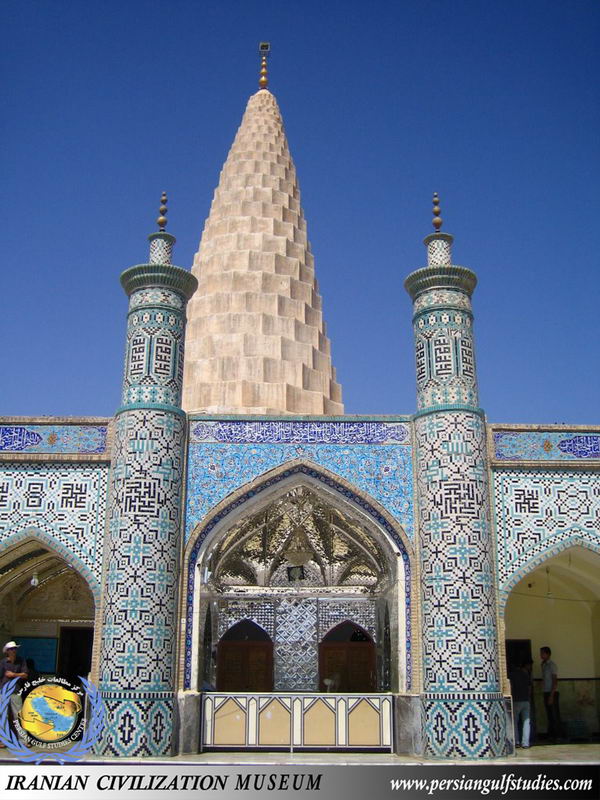 The Tomb of Daniel is the traditional burial place of the biblical prophet Daniel. Various locations have been named for the site, but the tomb in Susa, Iran, is the most widely accepted, it being first mentioned by Benjamin of Tudela, who visited Asia between 1160 and 1163. The Book of Daniel mentions that Daniel lived in Babylon and may have visited the palace of Susa, Iran, but the place where he died is not specified; the tradition preserved among the Jews and Arabs is that he was buried in Susa. Today the Tomb of Daniel in Susa is a popular attraction among local Muslims and Iran's Jewish community alike.
The Tomb of Daniel is the traditional burial place of the biblical prophet Daniel. Various locations have been named for the site, but the tomb in Susa, Iran, is the most widely accepted, it being first mentioned by Benjamin of Tudela, who visited Asia between 1160 and 1163. The Book of Daniel mentions that Daniel lived in Babylon and may have visited the palace of Susa, Iran, but the place where he died is not specified; the tradition preserved among the Jews and Arabs is that he was buried in Susa. Today the Tomb of Daniel in Susa is a popular attraction among local Muslims and Iran's Jewish community alike.
 The Saint Thaddeus beautiful Monastery is an ancient Armenian monastery located in the mountainous area of Iran's West Azerbaijan Province, about 20 kilometers from the town of Maku. Armenians are one of the ethnic iranian groups. The monastery is visible from a distance because of the massiveness of the church, strongly characterized by the polygonal drums and conical roofs of its two domes. There are several chapels nearby: three on the hills east of the stream, one approximately 3 km south of the monastery on the road to Bastam, and another that serves as the church for the village of Ghara-Kilise. One of the 12 Apostles, St. Thaddeus, also known as Saint Jude, (not to be confused with Judas Iscariot), was martyred while spreading the Gospel. He is revered as an apostle of the Armenian Apostolic Church. Legend has it that a church dedicated to him was first built on the present site in AD 68. Not much appears to remain of the original church, which was extensively rebuilt in 1329 after an earthquake damaged the structure in 1319. Nevertheless, some of the parts surrounding the altar apse date from the 10th century. In July 2008, the St. Thaddeus monastery was added to UNESCO's World Heritage List, along with two other Armenian monuments located in the same province: Saint Stepanos Monastery and the chapel of Dzordzor.
The Saint Thaddeus beautiful Monastery is an ancient Armenian monastery located in the mountainous area of Iran's West Azerbaijan Province, about 20 kilometers from the town of Maku. Armenians are one of the ethnic iranian groups. The monastery is visible from a distance because of the massiveness of the church, strongly characterized by the polygonal drums and conical roofs of its two domes. There are several chapels nearby: three on the hills east of the stream, one approximately 3 km south of the monastery on the road to Bastam, and another that serves as the church for the village of Ghara-Kilise. One of the 12 Apostles, St. Thaddeus, also known as Saint Jude, (not to be confused with Judas Iscariot), was martyred while spreading the Gospel. He is revered as an apostle of the Armenian Apostolic Church. Legend has it that a church dedicated to him was first built on the present site in AD 68. Not much appears to remain of the original church, which was extensively rebuilt in 1329 after an earthquake damaged the structure in 1319. Nevertheless, some of the parts surrounding the altar apse date from the 10th century. In July 2008, the St. Thaddeus monastery was added to UNESCO's World Heritage List, along with two other Armenian monuments located in the same province: Saint Stepanos Monastery and the chapel of Dzordzor.
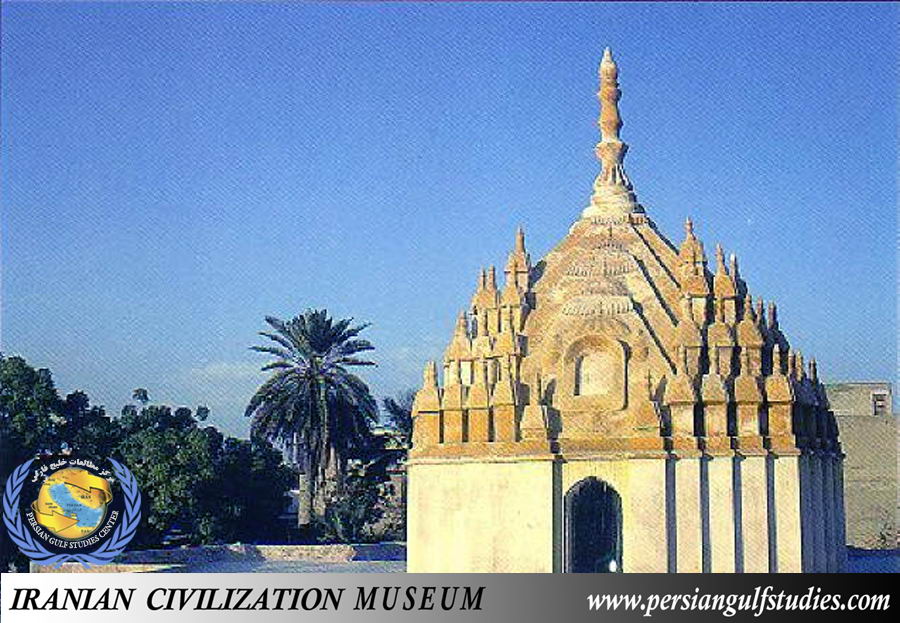 Hindu Temple of Bandar abbas (Hormozgan), The temple was constructed in the year 1310 AH., during the rule of Mohammad Hassan Khan Sa'ad-ol-Molk. The same comprises of a square room in the center of which is a jagged shaped dome. The architecture of this structure is very similar to that of the Indian temples.
Hindu Temple of Bandar abbas (Hormozgan), The temple was constructed in the year 1310 AH., during the rule of Mohammad Hassan Khan Sa'ad-ol-Molk. The same comprises of a square room in the center of which is a jagged shaped dome. The architecture of this structure is very similar to that of the Indian temples.
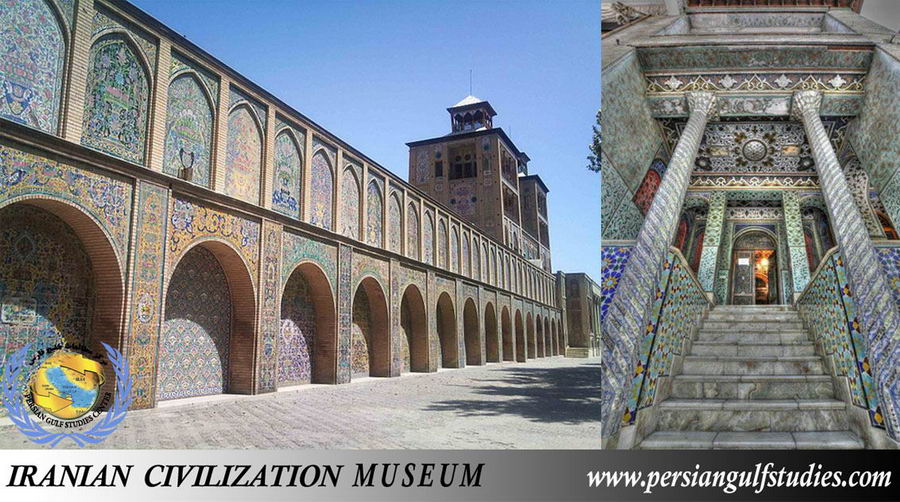 The Golestan beautiful Palace, literally the Roseland Palace, is the former royal Qajar complex in Iran's capital city, Tehran. The oldest of the historic monuments in Tehran, a world heritage, the Golestan Palace belongs to a group of royal buildings that were once enclosed within the mud-thatched walls of Tehran’s Historic Arg (citadel). Tehran’s Historic Arg was built during the reign of Tahmasp I (r. 1524-1576) of the Safavid dynasty (1502–1736), and was later renovated by Karim Khan of Zand (r. 1750-1779). Agha Mohammad Khan of Qajar (1742–1797) chose Tehran as his capital. The Arg became the site of the Qajar (1794–1925). The Court and the Golestan Palace became the official residence of the royal Qajar family. The palace was rebuilt to its current form in 1865 by Haji Ab ol Hasan Mimar Navai.
The Golestan beautiful Palace, literally the Roseland Palace, is the former royal Qajar complex in Iran's capital city, Tehran. The oldest of the historic monuments in Tehran, a world heritage, the Golestan Palace belongs to a group of royal buildings that were once enclosed within the mud-thatched walls of Tehran’s Historic Arg (citadel). Tehran’s Historic Arg was built during the reign of Tahmasp I (r. 1524-1576) of the Safavid dynasty (1502–1736), and was later renovated by Karim Khan of Zand (r. 1750-1779). Agha Mohammad Khan of Qajar (1742–1797) chose Tehran as his capital. The Arg became the site of the Qajar (1794–1925). The Court and the Golestan Palace became the official residence of the royal Qajar family. The palace was rebuilt to its current form in 1865 by Haji Ab ol Hasan Mimar Navai.
 Shazdeh Garden meaning Prince’s Garden is a historical Persian garden located near (6km away from) Mahan in Kerman province, Iran. The garden is 5.5 hectares with a rectangular shape and a wall around it. It consists of an entrance structure and gate at the lower end and a two-floor residential structure at the upper end. The distance between these two is ornamented with water fountains that are engined by the natural incline of the land. The garden is a fine example of Persian gardens that take advantage of suitable natural climate. The garden was built originally for Mohammad Hasan Khan Qajar Sardari Iravani ca.1850 and was extended ca.1870 by Abdolhamid Mirza Naserodollehand during the eleven years of his governorship in the Qajar dynasty.
Shazdeh Garden meaning Prince’s Garden is a historical Persian garden located near (6km away from) Mahan in Kerman province, Iran. The garden is 5.5 hectares with a rectangular shape and a wall around it. It consists of an entrance structure and gate at the lower end and a two-floor residential structure at the upper end. The distance between these two is ornamented with water fountains that are engined by the natural incline of the land. The garden is a fine example of Persian gardens that take advantage of suitable natural climate. The garden was built originally for Mohammad Hasan Khan Qajar Sardari Iravani ca.1850 and was extended ca.1870 by Abdolhamid Mirza Naserodollehand during the eleven years of his governorship in the Qajar dynasty.
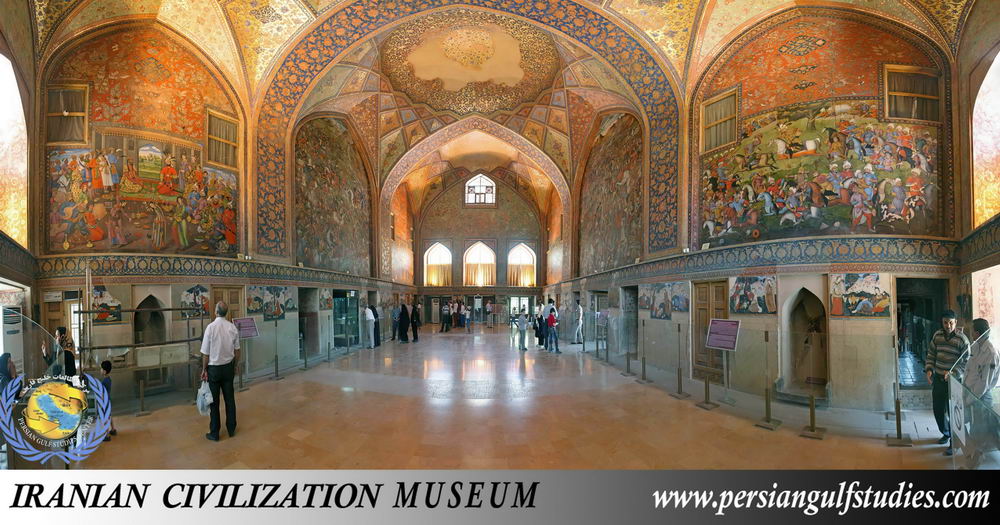 Chehel Sotoun Palace, is a pavilion in the middle of a park at the far end of a long pool, in Isfahan, Iran, built by Shah Abbas II to be used for his entertainment and receptions. In this palace, Shah Abbas II and his successors would receive dignitaries and ambassadors, either on the terrace or in one of the stately reception halls. The name, meaning "Forty Columns" in Persian, was inspired by the twenty slender wooden columns supporting the entrance pavilion, which, when reflected in the waters of the fountain, are said to appear to be forty. The most startling feature of the pavilion is the brilliantly painted interior, which in contrast to general Islamic design features a multitude of human figures, including several scenes of battle and audiences held by the Shah with rulers bordering the eastern portion of the empire. The Chehel Sotoun Palace is located in one of the gardens among the 9 Iranian Gardens which are collectively registered as one of the Iran’s 17 registered World Heritage Sites under the name of the Persian Garden.
Chehel Sotoun Palace, is a pavilion in the middle of a park at the far end of a long pool, in Isfahan, Iran, built by Shah Abbas II to be used for his entertainment and receptions. In this palace, Shah Abbas II and his successors would receive dignitaries and ambassadors, either on the terrace or in one of the stately reception halls. The name, meaning "Forty Columns" in Persian, was inspired by the twenty slender wooden columns supporting the entrance pavilion, which, when reflected in the waters of the fountain, are said to appear to be forty. The most startling feature of the pavilion is the brilliantly painted interior, which in contrast to general Islamic design features a multitude of human figures, including several scenes of battle and audiences held by the Shah with rulers bordering the eastern portion of the empire. The Chehel Sotoun Palace is located in one of the gardens among the 9 Iranian Gardens which are collectively registered as one of the Iran’s 17 registered World Heritage Sites under the name of the Persian Garden.
 The Shah Mosque, also known as Imam Mosque, renamed after the 1979 Islamic revolution in Iran, and Jaame' Abbasi Mosque, is a mosque in Isfahan, Iran, standing in south side of Naghsh-e Jahan Square. Built during the Safavid period, ordered by the first Shah Abbas of Persia. The mosque has also been called Jameh Mosque of Isfahan over the course of years. View of the Mosque from Naqsh-e Jahan SquareIt is regarded as one of the masterpieces of Persian Architecture and an excellent example of Islamic era architecture of Iran. The Shah Mosque of Isfahan is one of the everlasting masterpieces of architecture in Iran. It is registered, along with the Naghsh-e Jahan Square, as a UNESCO World Heritage Site. Its construction began in 1611, and its splendor is mainly due to the beauty of its seven-colour mosaic tiles and calligraphic inscriptions. The mosque is one of the treasures featured on Around the World in 80 Treasures presented by the architecture historian Dan Cruickshank. The mosque is depicted on the reverse of the Iranian 20,000 Rials banknote.
The Shah Mosque, also known as Imam Mosque, renamed after the 1979 Islamic revolution in Iran, and Jaame' Abbasi Mosque, is a mosque in Isfahan, Iran, standing in south side of Naghsh-e Jahan Square. Built during the Safavid period, ordered by the first Shah Abbas of Persia. The mosque has also been called Jameh Mosque of Isfahan over the course of years. View of the Mosque from Naqsh-e Jahan SquareIt is regarded as one of the masterpieces of Persian Architecture and an excellent example of Islamic era architecture of Iran. The Shah Mosque of Isfahan is one of the everlasting masterpieces of architecture in Iran. It is registered, along with the Naghsh-e Jahan Square, as a UNESCO World Heritage Site. Its construction began in 1611, and its splendor is mainly due to the beauty of its seven-colour mosaic tiles and calligraphic inscriptions. The mosque is one of the treasures featured on Around the World in 80 Treasures presented by the architecture historian Dan Cruickshank. The mosque is depicted on the reverse of the Iranian 20,000 Rials banknote.
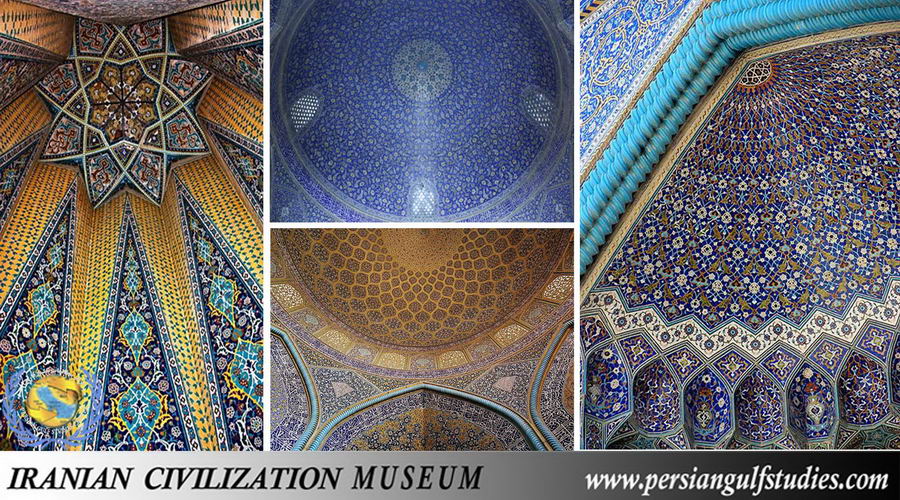 Iranian Beautiful art in mosques.
Iranian Beautiful art in mosques.
 tomb of Shams-e-Tabrīzī in khoy, Shams-i-Tabrīzī or 'Shams al-Din Mohammad' (1185–1248) was an Iranian Muslim, who is credited as the spiritual instructor of Mewlānā Jalāl ad-Dīn Muhammad Balkhi, also known as Rumi and is referenced with great reverence in Rumi’s poetic collection, in particular Diwan-e Shams-e Tabrīzī (The Works of Shams of Tabriz). Tradition holds that Shams taught Rumi in seclusion in Konya for a period of forty days, before fleeing for Damascus. The tomb of Shams-i Tabrīzī was recently nominated to be a UNESCO World Heritage Site.
tomb of Shams-e-Tabrīzī in khoy, Shams-i-Tabrīzī or 'Shams al-Din Mohammad' (1185–1248) was an Iranian Muslim, who is credited as the spiritual instructor of Mewlānā Jalāl ad-Dīn Muhammad Balkhi, also known as Rumi and is referenced with great reverence in Rumi’s poetic collection, in particular Diwan-e Shams-e Tabrīzī (The Works of Shams of Tabriz). Tradition holds that Shams taught Rumi in seclusion in Konya for a period of forty days, before fleeing for Damascus. The tomb of Shams-i Tabrīzī was recently nominated to be a UNESCO World Heritage Site.
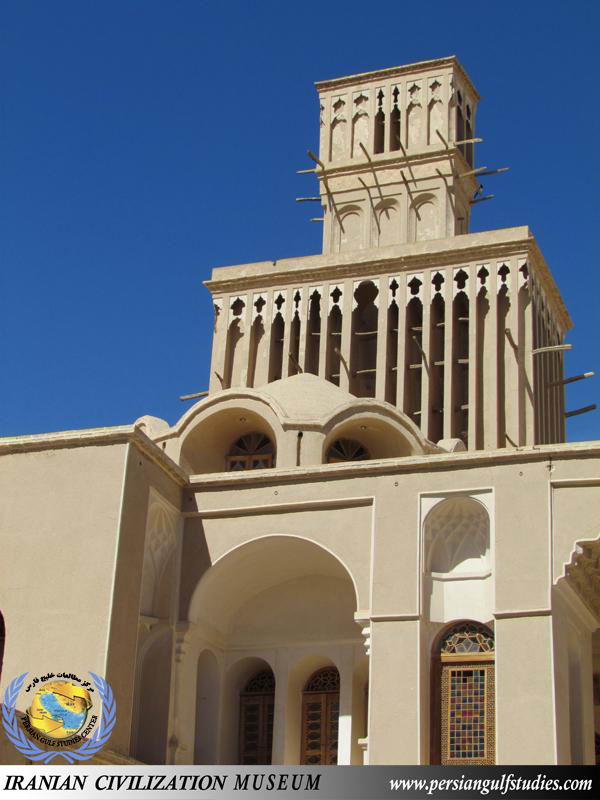 Yazd Windcatcher, A persian art & a windcatcher is a traditional Persian architectural element to create natural ventilation in buildings. Windcatchers come in various designs: uni-directional, bi-directional, and multi-directional. Windcatchers remain present in many countries and can be found in traditional Persian-influenced architecture throughout the Middle East, including in the Bahrain and Afghanistan.
Yazd Windcatcher, A persian art & a windcatcher is a traditional Persian architectural element to create natural ventilation in buildings. Windcatchers come in various designs: uni-directional, bi-directional, and multi-directional. Windcatchers remain present in many countries and can be found in traditional Persian-influenced architecture throughout the Middle East, including in the Bahrain and Afghanistan.
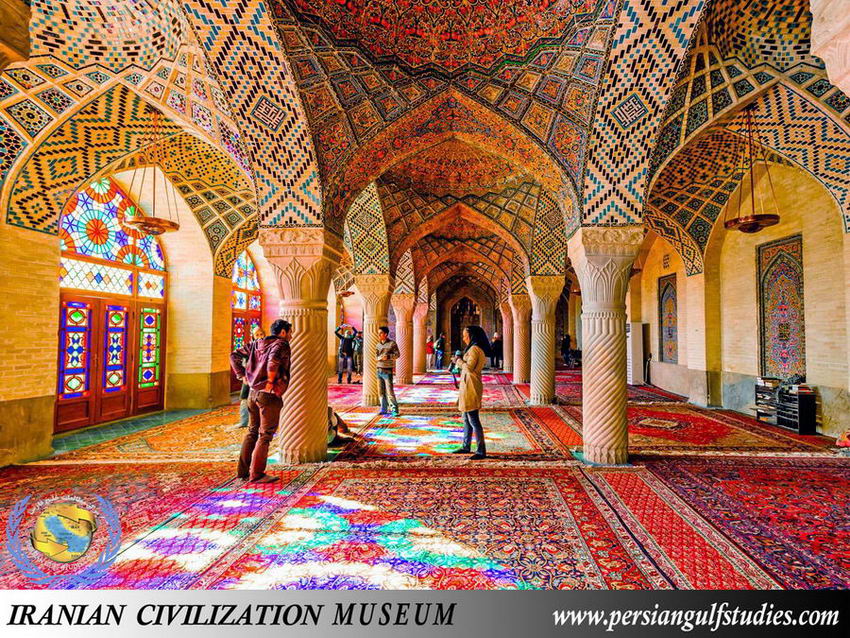 The Nasīr al-Mulk Mosque or Pink Mosque is a traditional mosque in Shiraz, Iran, located in Goade-e-Araban place (near the famous Shah Cheragh mosque). The mosque was built during the Qājār era, and is still in use under protection by Nasir al Mulk's Endowment Foundation. It was built by the order of Mirza Hasan Ali Nasir al Molk, one of the lords of the Qajar Dynasty, in 1876 and was finished in 1888. The designers were Muhammad Hasan-e-Memar and Muhammad Reza Kashi Paz-e-Shirazi. The mosque extensively uses colored glass in its facade, and it displays other traditional elements such as panj kāseh-i (five concaves) in its design. It is also named in popular culture as Pink Mosque due to the usage of beautiful pink color tiles for its interior design.
The Nasīr al-Mulk Mosque or Pink Mosque is a traditional mosque in Shiraz, Iran, located in Goade-e-Araban place (near the famous Shah Cheragh mosque). The mosque was built during the Qājār era, and is still in use under protection by Nasir al Mulk's Endowment Foundation. It was built by the order of Mirza Hasan Ali Nasir al Molk, one of the lords of the Qajar Dynasty, in 1876 and was finished in 1888. The designers were Muhammad Hasan-e-Memar and Muhammad Reza Kashi Paz-e-Shirazi. The mosque extensively uses colored glass in its facade, and it displays other traditional elements such as panj kāseh-i (five concaves) in its design. It is also named in popular culture as Pink Mosque due to the usage of beautiful pink color tiles for its interior design.
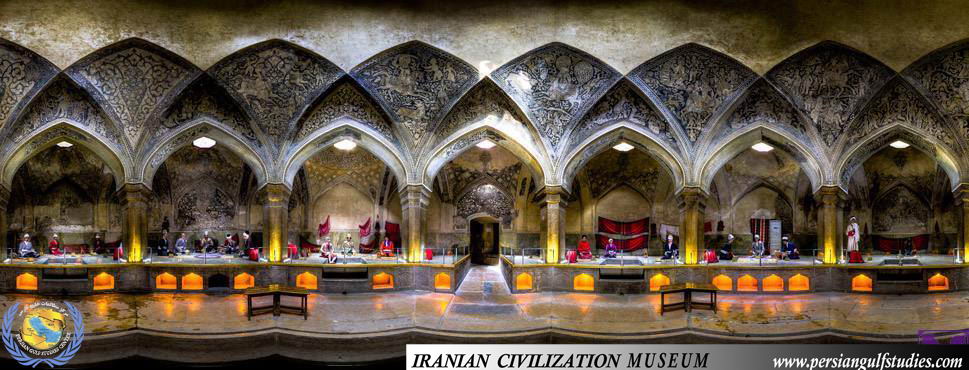 Vakil Bath is an old beautiful bath in Shiraz, Iran. It was a part of the royal district constructed during Karim Khan Zand reign, which includes Arg of Karim Khan, Vakil Bazaar, Vakil Mosque and many administrative buildings.The monument is inscribed with the number 917 on the list of national works of Iran.
Vakil Bath is an old beautiful bath in Shiraz, Iran. It was a part of the royal district constructed during Karim Khan Zand reign, which includes Arg of Karim Khan, Vakil Bazaar, Vakil Mosque and many administrative buildings.The monument is inscribed with the number 917 on the list of national works of Iran.
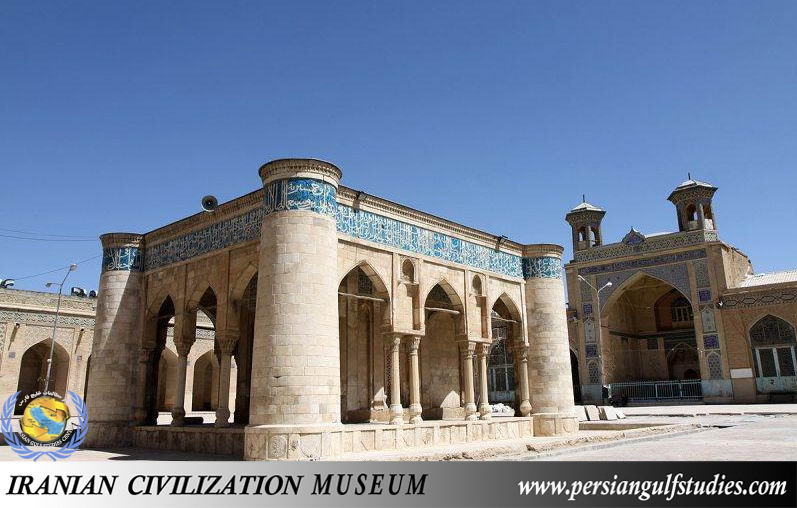 Atigh Jame' Mosque is a 9th-century mosque in Shiraz, the capital of Fars Province, Iran.
Atigh Jame' Mosque is a 9th-century mosque in Shiraz, the capital of Fars Province, Iran.
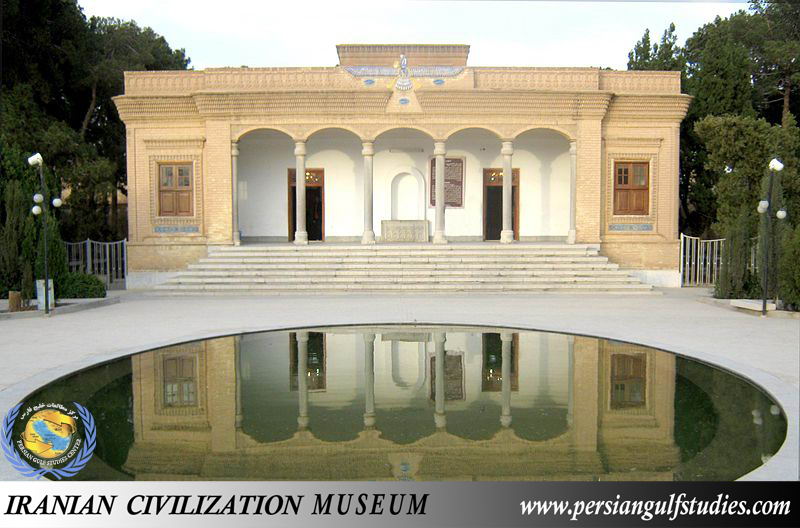 Yazd Fire temple (Atash Behram), A fire temple in Zoroastrianism is the place of worship for Zoroastrians, often called dar-e mehr (Persian) .In the Zoroastrian religion, fire, together with clean water, are agents of ritual purity. Clean, white "ash for the purification ceremonies is regarded as the basis of ritual life," which "are essentially the rites proper to the tending of a domestic fire, for the temple [fire] is that of the hearth fire raised to a new solemnity". First evident in the 4th century BCE, the Zoroastrian religion of fire is much younger than Zoroastrianism itself. It appears at approximately the same time as the shrine cult and is roughly contemporaneous with the introduction of Atar as a divinity. There is no allusion to a temple cult of fire in the Avesta proper, nor is there any Old Persian language word for one.
Yazd Fire temple (Atash Behram), A fire temple in Zoroastrianism is the place of worship for Zoroastrians, often called dar-e mehr (Persian) .In the Zoroastrian religion, fire, together with clean water, are agents of ritual purity. Clean, white "ash for the purification ceremonies is regarded as the basis of ritual life," which "are essentially the rites proper to the tending of a domestic fire, for the temple [fire] is that of the hearth fire raised to a new solemnity". First evident in the 4th century BCE, the Zoroastrian religion of fire is much younger than Zoroastrianism itself. It appears at approximately the same time as the shrine cult and is roughly contemporaneous with the introduction of Atar as a divinity. There is no allusion to a temple cult of fire in the Avesta proper, nor is there any Old Persian language word for one.
